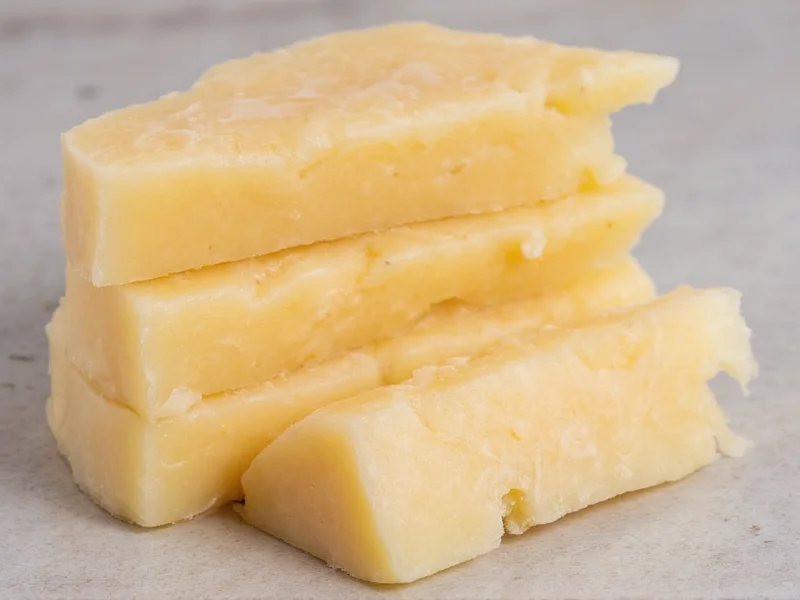Proper storage of parmesan cheese preserves its distinctive nutty flavor and crystalline texture while preventing spoilage. As one of the world's most prized hard cheeses, parmesan deserves careful handling to maintain its quality from the moment you bring it home from the store.
Understanding Parmesan Cheese Types and Their Storage Needs
Parmesan comes in two primary forms that require different storage approaches: whole blocks and pre-grated. Whole parmesan blocks (often labeled as Parmigiano-Reggiano when authentic) have a protective rind that helps maintain freshness longer than grated versions. The best way to keep parmesan cheese block intact involves protecting both the cut surface and the natural rind.
Pre-grated parmesan, while convenient, has significantly more surface area exposed to air, accelerating moisture loss and potential mold growth. When considering how to store parmesan cheese in refrigerator conditions, remember that grated varieties need more airtight protection than blocks.
Step-by-Step Guide to Storing Parmesan Cheese
For Block Parmesan
- Remove any original plastic wrapping, which traps moisture and promotes bacterial growth
- Cut a piece of wax paper or parchment paper large enough to fully wrap the cheese
- Wrap the cheese snugly, folding paper edges neatly
- Place the wrapped cheese inside an airtight container
- Store in the vegetable drawer of your refrigerator (34-38°F/1-3°C)
For Grated Parmesan
- Transfer from store packaging to an airtight container or resealable freezer bag
- If using a bag, press out as much air as possible before sealing
- Consider adding a small piece of sugar cube to absorb excess moisture
- Store on a middle refrigerator shelf away from strong-smelling foods
Extended Storage Options
For those wondering how to store parmesan cheese long term, freezing provides excellent results. The proper way to wrap parmesan cheese for freezing involves double protection:
- First wrap in wax paper or parchment paper
- Then place in a heavy-duty freezer bag with air removed
- Label with date for reference
Block parmesan freezes exceptionally well for up to 12 months. Grated parmesan maintains quality for 3-6 months when frozen properly. Thaw frozen parmesan in the refrigerator overnight before use for best texture retention.
| Storage Method | Block Parmesan | Grated Parmesan |
|---|---|---|
| Room Temperature (unopened) | 1-2 weeks | Not recommended |
| Refrigerator (properly wrapped) | 6-8 weeks | 2-3 weeks |
| Freezer (airtight container) | 10-12 months | 3-6 months |
| Vacuum sealed | 8-10 months | 4-5 months |
Common Parmesan Storage Mistakes to Avoid
Many home cooks make critical errors when storing parmesan that compromise its quality. The most frequent mistake is keeping parmesan in its original plastic packaging, which creates a humid environment that encourages mold growth. Another common error involves using aluminum foil directly on the cheese, which can impart metallic flavors.
When considering the best container for keeping parmesan fresh, avoid containers with strong odors or previous food residues. Glass containers with tight-sealing lids work exceptionally well for grated parmesan storage. For block parmesan, specialized cheese containers with humidity controls provide optimal conditions.
Identifying Spoiled Parmesan Cheese
Knowing how long does parmesan cheese last in fridge is important, but recognizing spoilage matters more. Signs that parmesan has gone bad include:
- Visible mold growth beyond the immediate surface area (small surface mold on hard cheese can often be cut away safely)
- Significant darkening or discoloration
- Unpleasant sour or ammonia-like odors
- Excessive dryness or crystallization beyond normal texture
Unlike soft cheeses, hard cheeses like parmesan can often be salvaged if mold appears. Simply cut away at least 1 inch around and below any visible mold spots, then rewrap the remaining cheese using the proper storage method.
Maximizing Flavor and Texture
For optimal flavor development, remove refrigerated parmesan from cold storage 30-60 minutes before serving. This allows the cheese's complex flavor compounds to express themselves fully. When storing opened parmesan, always use clean utensils to prevent introducing bacteria that accelerate spoilage.
Understanding the proper way to wrap parmesan cheese prevents the common issue of 'cheese sweat'—moisture beads that form when cheese experiences temperature fluctuations. This moisture creates an environment where bacteria can thrive, shortening the cheese's shelf life.











 浙公网安备
33010002000092号
浙公网安备
33010002000092号 浙B2-20120091-4
浙B2-20120091-4